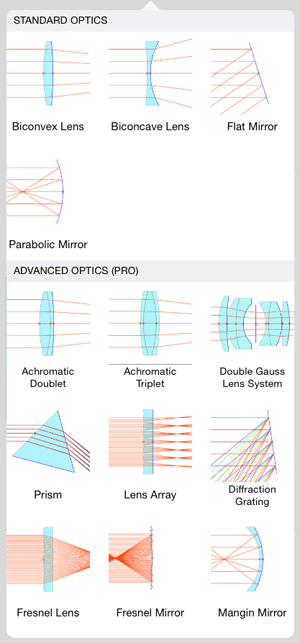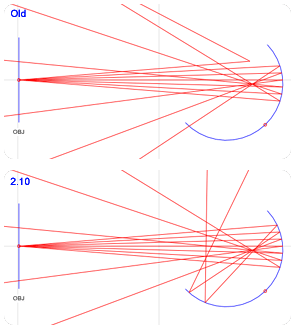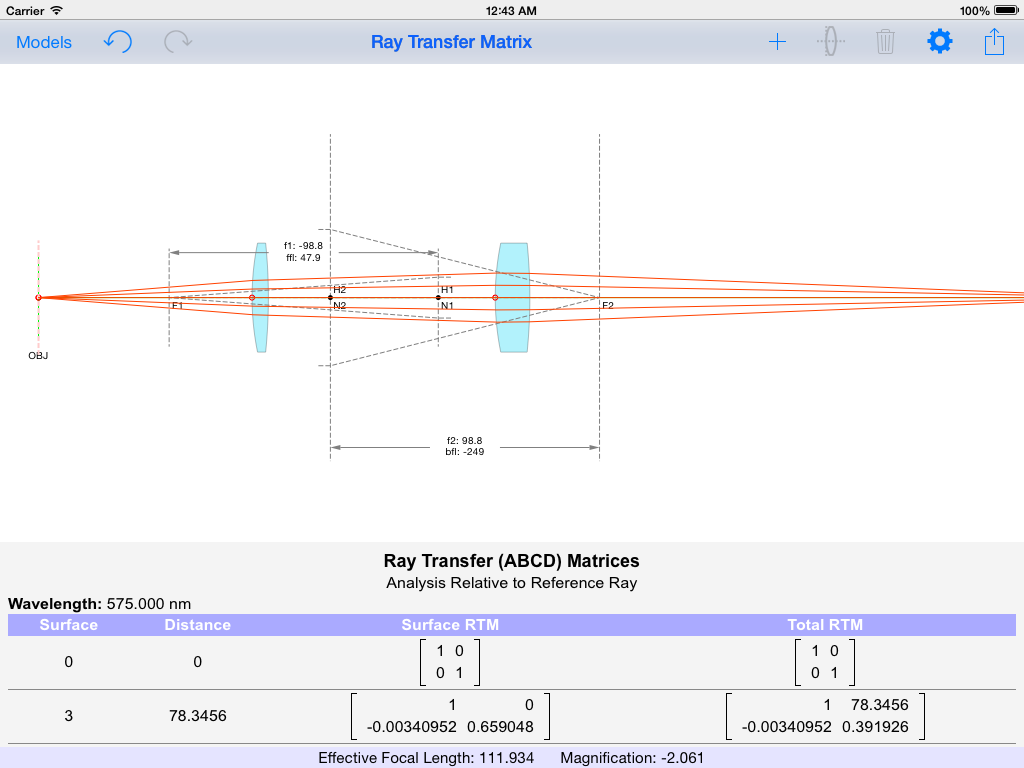Edit: The Pro in-App purchase did not show up in 2.10. This bug is fixed in 2.11.
RayLab 2.10 is part of transition to new pricing plan for RayLab. The intention is to make the RayLab app itself free. This will give access to many of RayLab’s features. But certain features are now part of the Pro in-App purchase. The Pro package is currently free, to give an opportunity to all current users to enable it at no cost. After a few weeks I will make the main App free, and switch the Pro in-App purchase to a paid item.
The Pro package currently includes the following optical elements:
- Achromatic Doublet
- Achromatic Triplet
- Double Gauss Lens System
- Prism
- Lens Array
- Diffraction Grating
- Fresnel Lens
- Fresnel Mirror
- Mangin Mirror
RayLab Pro also includes the Analysis Windows:
- Fan Ray Plot
- Wavefront Error Plot
- Grid Distortion
- Spot Diagram
- Spot Diagram (Filled)
- Chromatic Aberration
- Gaussian Spot Size
More info here on Analysis Windows.
If you try to use any of the Advanced Optics, or Analysis Windows, you will be prompted to purchase the Pro upgrade (Which is free during the transition period). Once you enable this you will have access to all Pro features even after the free period ends. Only new users would need to pay for the upgrade at that point.
If you have purchased any glass catalogs, you will continue to be able to use those regardless.
Improved Intersection Algorithm
The ray intersection algorithm has been improved to be much more accurate in the case of oblique rays and high curvature elements.





